Switching from a brand-name medication to a generic is common-often required by insurance or pharmacy systems. But what if the generic isn’t working for you? Maybe you developed a rash, felt more fatigued, or your condition suddenly worsened. You’re not imagining it. Sometimes, switching back to the brand is the right move. But doing it safely? That’s where things get tricky.
Why Switching Back Isn’t as Simple as Asking for the Original
Generic drugs are required by the FDA to have the same active ingredient, strength, and dosage form as the brand. They must also be bioequivalent-meaning they deliver the same amount of medicine into your bloodstream within a specific range (80%-125% of the brand). For most people, that’s enough. But bioequivalence doesn’t mean identical. The difference lies in the inactive ingredients: dyes, fillers, binders, and coatings. These don’t treat your condition, but they can trigger reactions. One patient in Brisbane reported breaking out in hives after switching to a generic version of levothyroxine. The brand didn’t contain the red dye the generic did. After switching back, the rash vanished. That’s not rare. Certain drugs have a narrow therapeutic index-small changes in blood levels can cause big problems. Think warfarin, lithium, seizure medications like phenytoin, or thyroid hormones. Even a slight shift in absorption can lead to a blood clot, a seizure, or thyroid storm. The FDA tightens the bioequivalence range for these drugs to 90%-111%. But even then, some patients still react differently to different formulations.When Switching Back Is Medically Necessary
You shouldn’t switch back just because you’re suspicious or heard a story online. There are clear medical reasons:- You had a confirmed adverse reaction to the generic (rash, nausea, dizziness, or worsening symptoms)
- Your condition became unstable after switching (e.g., INR levels fluctuating on warfarin, thyroid levels dropping on levothyroxine)
- You’re on a narrow therapeutic index drug and your doctor has documented a pattern of instability with generics
- You’ve tried multiple generic brands and all caused issues-this suggests a formulation-specific problem, not just bad luck
The 7-Step Safe Switching Process
Switching back isn’t a pharmacy counter request. It’s a medical process. Here’s how to do it right:- Track your symptoms. Keep a daily log: when you switched, what changed, and when. Note sleep, energy, mood, pain, or lab values. This isn’t optional-it’s your evidence.
- Talk to your doctor. Don’t wait until you’re in crisis. Bring your log. Say: “I think the generic is causing problems. Can we switch back to [brand name]?”
- Get a written prescription with DAW-1. Your doctor must write “Dispense as Written” or “Brand Medically Necessary” on the prescription. In electronic systems, they’ll check a box labeled “Brand Required.” This tells the pharmacy not to substitute.
- Specify the exact brand. Don’t just say “Synthroid.” Write “Synthroid 50 mcg tablets.” Some brands make similar drugs-Levoxyl, Tirosint, Unithroid. Only one may work for you.
- Request lab monitoring. If you’re on warfarin, thyroid meds, or seizure drugs, your doctor should order a blood test within 7-10 days after switching back. This confirms your levels are stable.
- Call your pharmacy ahead. Some pharmacists still try to substitute. Call before you go in. Say: “I have a DAW-1 prescription for Synthroid. Please confirm they can fill it as written.”
- Follow up with your doctor. Schedule a check-in in two weeks. Even if you feel better, your doctor needs to confirm your labs are stable and no new side effects emerged.
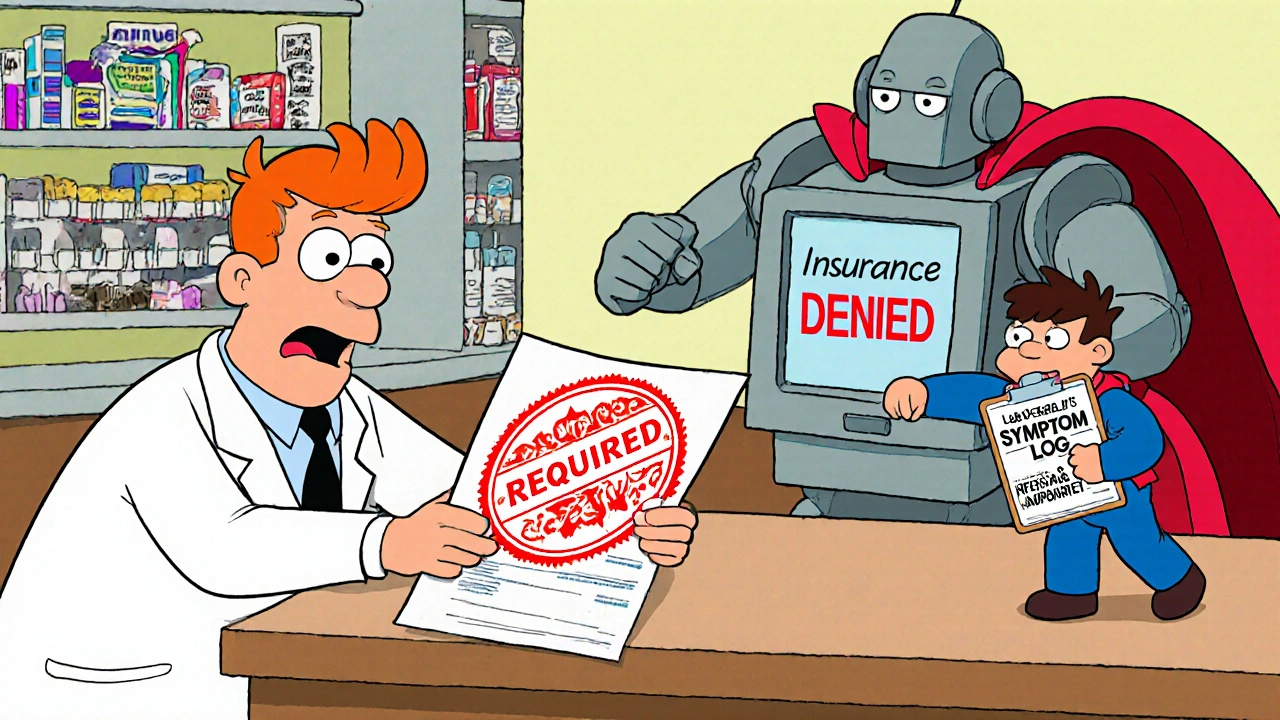
Insurance Is the Biggest Hurdle
Here’s the hard truth: insurance companies don’t want you to switch back. Generics save them money. In 2023, Medicare Part D denied 68% of brand-name requests when a generic was available. Blue Cross Blue Shield had denial rates as high as 82% based on patient reports. You’ll likely need prior authorization. That means your doctor fills out a form explaining why the generic failed. The form must include:- Specific clinical evidence (e.g., “INR fluctuated from 2.1 to 4.8 in 3 weeks after switching to generic warfarin”)
- Lab results
- Previous attempts with other generics
- Documentation of adverse reactions
What to Do If the Pharmacy Refuses
Sometimes, even with a DAW-1 prescription, pharmacies will say they don’t stock the brand. Or they’ll claim “the insurance won’t pay.” Here’s what to do:- Ask if they can order it. Most pharmacies can get brand-name drugs in 1-2 days.
- Request a different pharmacy. Chain pharmacies like CVS or Walgreens often have better access than independent ones.
- Use a specialty pharmacy. Some companies specialize in hard-to-find medications and handle prior authorizations for you.
- Don’t stop your medication. If you’re out, ask your doctor for a short-term bridge-maybe a 3-day supply of the brand from a sample pack or urgent prescription.
Costs and Alternatives
Brand-name drugs can cost 3-5 times more than generics. A monthly cardiovascular brand might run $450, while the generic is $112. But here’s something many don’t know: some brand companies sell “authorized generics.” These are the exact same pills, made by the brand, but sold under a generic label at a lower price. Ask your pharmacist: “Is there an authorized generic version of this drug?” If yes, you might get the same formulation as the brand-but at generic pricing. That’s a win. Also, check drug assistance programs. Many brand manufacturers offer copay cards or patient assistance programs. For Synthroid, the manufacturer offers a savings card that can drop the cost to $10 a month for eligible patients.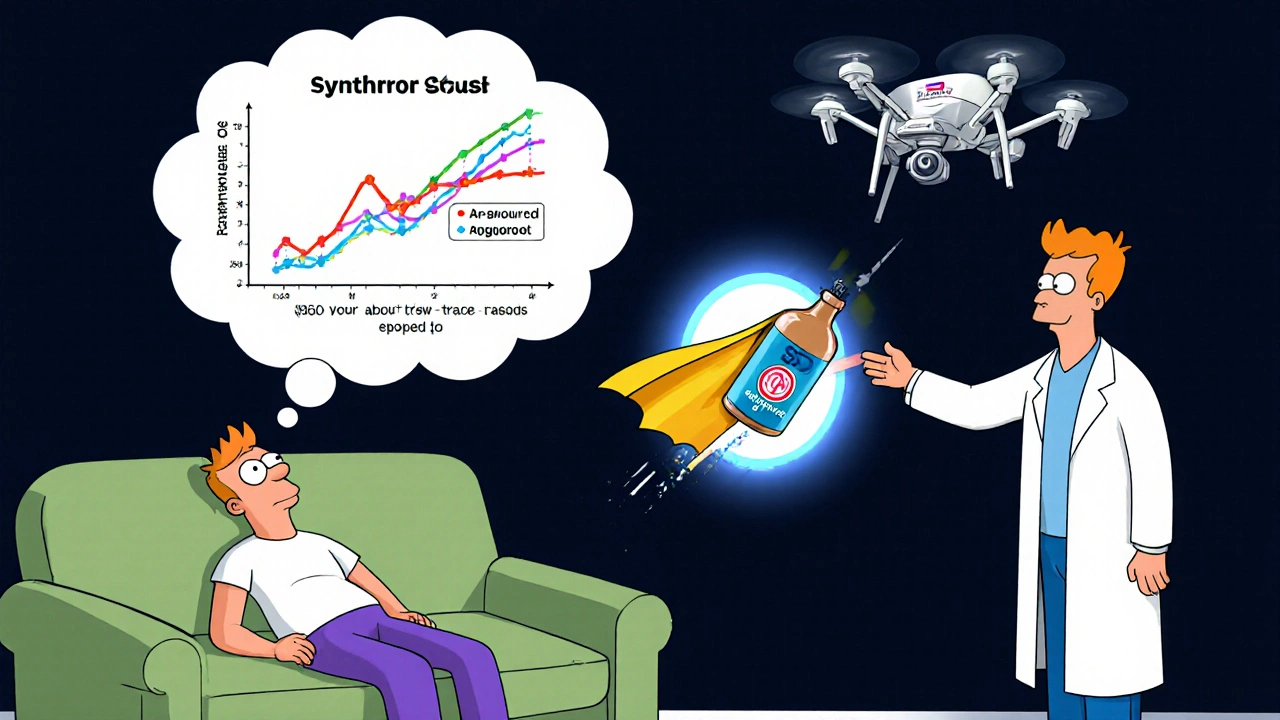
When You Shouldn’t Switch Back
Not every complaint means you need the brand. The American Pharmacists Association warns against switching back for antiepileptic drugs unless there’s clear, documented failure. One study showed a 27% higher risk of breakthrough seizures when patients switched between different generic versions-or back to brand. Also, if your condition is stable on the generic, don’t switch just because you’re worried. The FDA and most medical groups agree: 99.7% of patients do just as well on generics. Switching back without cause increases costs and doesn’t improve outcomes.What’s Changing in 2025
The FDA’s 2023 Generic Drug User Fee Amendments now require manufacturers to disclose formulation changes to the FDA and notify prescribers if they alter inactive ingredients. That means if your generic suddenly tastes different or causes issues, there’s a paper trail. Medicare Part D is also rolling out a new 72-hour fast-track approval for “Medically Necessary Brand” requests starting in 2024. That should cut the average wait time from 14 days to under 3.Final Thought: Your Body Knows
You know your body better than anyone. If you feel different after a switch, trust that. But don’t act alone. Use your doctor as your partner. Document everything. Push for the right prescription. Fight the insurance if you have to. Switching back to a brand isn’t about preference. It’s about safety. And when done right-with evidence, documentation, and medical oversight-it’s not just allowed. It’s necessary.Can I just ask my pharmacist to give me the brand instead of the generic?
No. Pharmacists are legally allowed to substitute generics unless the prescription says “Dispense as Written” (DAW-1) or “Brand Medically Necessary.” Even then, they can’t override insurance rules. You need a doctor’s written request with clinical justification to make the switch happen.
How long does it take to get insurance approval to switch back to a brand?
It can take anywhere from 24 hours to 14 days. With proper documentation, some insurers now process requests in under 72 hours under new 2024 Medicare rules. But without it, expect delays. Always submit your prior authorization request as soon as your doctor signs off.
Are all generics the same?
No. Different manufacturers use different inactive ingredients. Two generics for the same drug can have different dyes, fillers, or coatings. That’s why some patients react to one generic but not another. If you have issues, try switching between different generic brands before asking for the brand-name version.
What if I can’t afford the brand even after insurance?
Check if the manufacturer offers a patient assistance program or copay card. For drugs like Synthroid, Levothyroxine, or Warfarin, these programs can reduce your cost to $10-$20 per month. Also ask your doctor about authorized generics-same formula, lower price.
Can switching back cause withdrawal symptoms?
Not directly. But if your body adjusted to a slightly different absorption rate from the generic, switching back might cause temporary side effects-like dizziness or nausea-as your system readjusts. That’s why your doctor should monitor you for 7-10 days after the switch.
Is it safe to switch back and forth between generic and brand?
No. Frequent switching increases the risk of instability, especially with narrow therapeutic index drugs. Once you switch back to the brand, stay on it unless your doctor advises otherwise. Constant changes can lead to unpredictable drug levels and serious health risks.
What should I do if my doctor refuses to switch me back?
Ask for a clear reason. If they say “it’s not necessary,” request a second opinion from a specialist-especially if you’re on a high-risk medication like thyroid hormone, seizure drugs, or blood thinners. Bring your symptom log and lab results. Sometimes, a different doctor sees the pattern you’ve documented.

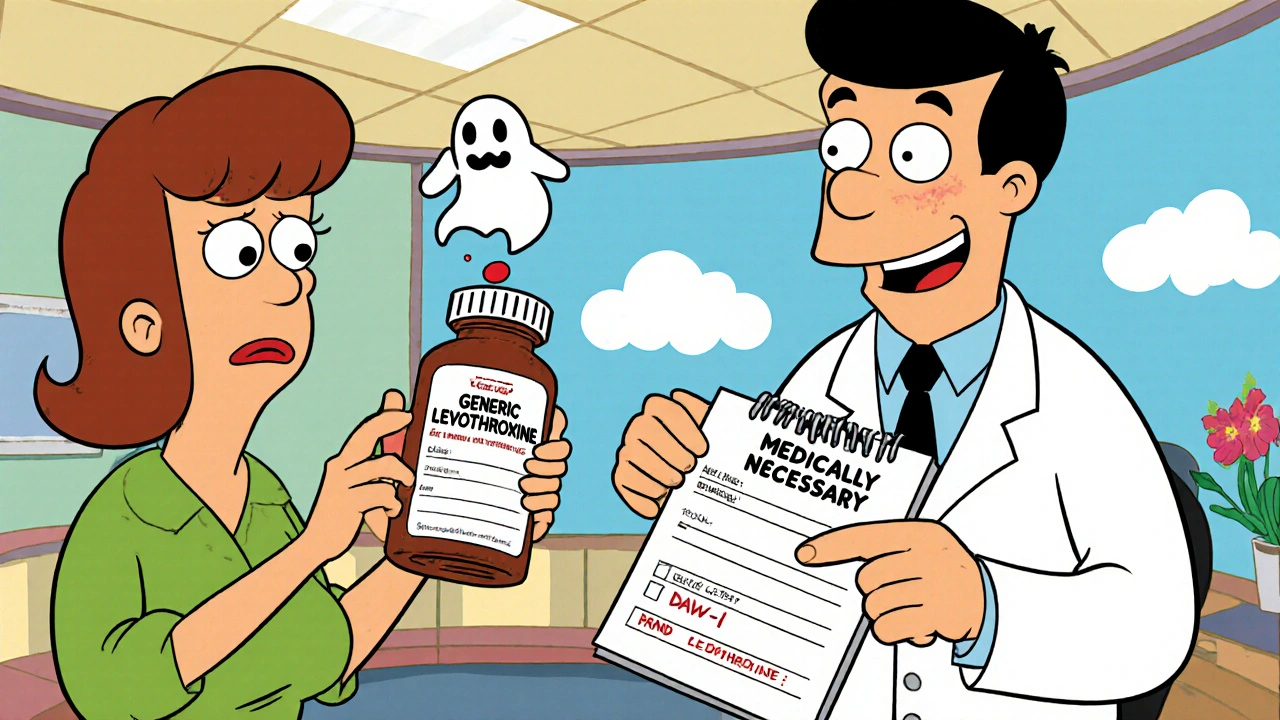

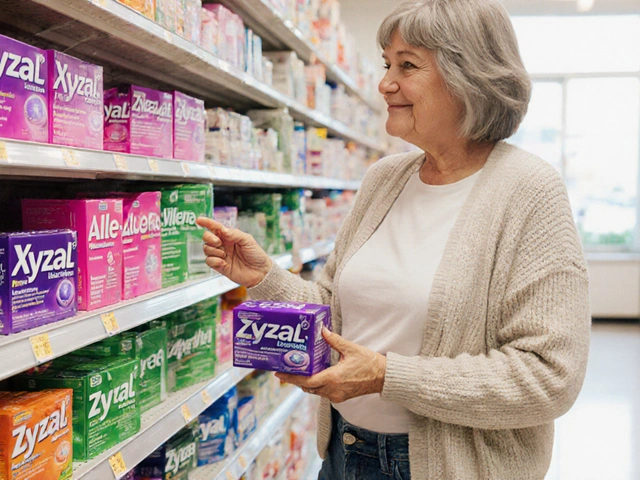

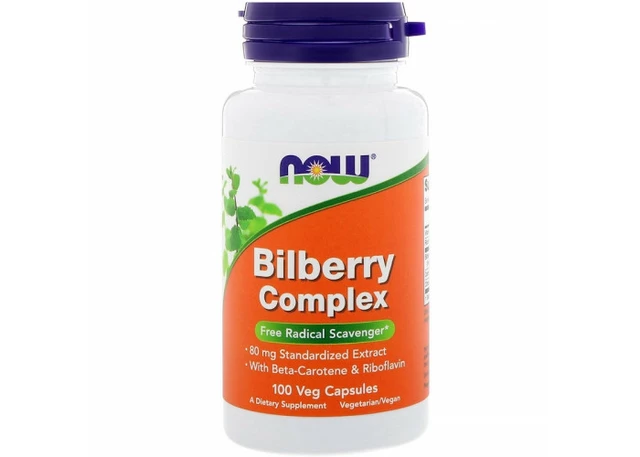
Kihya Beitz
November 15, 2025 AT 09:13So let me get this straight - I’m supposed to log my mood swings, track my INR levels, and beg my doctor to write a prescription like I’m applying for a visa just to get the same damn pill I was on before? And if I don’t, I’m just ‘imagining it’? 😒
My pharmacy tried to swap my Synthroid for a generic that tasted like burnt plastic. I threw up for three days. My doctor laughed. Insurance denied me twice. Now I’m paying out of pocket because ‘the system works’ - except it doesn’t work for people who aren’t robots.
Jennifer Walton
November 15, 2025 AT 14:15There is a philosophical tension here between standardization and individuality. The body is not a variable in a clinical trial. It is a unique ecosystem. To treat it as interchangeable is to reduce medicine to accounting.
Edward Ward
November 16, 2025 AT 12:44I really appreciate how thorough this breakdown is - especially the part about inactive ingredients being the real culprit. I didn’t realize that dyes and fillers could trigger reactions like that. I had a friend who got chronic migraines after switching to a generic gabapentin, and no one could figure it out until she switched back and the headaches vanished. The FDA’s bioequivalence range sounds scientific, but it’s basically saying ‘close enough’ - and for some people, ‘close enough’ is a death sentence. Also, the fact that authorized generics exist is a game-changer. Why doesn’t anyone talk about that? It’s like the pharmaceutical industry has a secret loophole that actually helps patients. I’m gonna start asking my pharmacist about it every time I refill.
Andrew Eppich
November 17, 2025 AT 13:41This article is dangerously misleading. People who complain about generics are often just lazy or seeking attention. The FDA has stringent standards. If you’re having issues, it’s more likely noncompliance, poor diet, or psychological factors than the medication. Stop demanding special treatment because you can’t handle a little change. Generics save billions. Don’t be the person who wastes resources because you’re emotionally attached to a brand name.
Jessica Chambers
November 18, 2025 AT 01:25Ugh. I’ve been here. 😩
My thyroid levels went haywire after the switch. Doctor said ‘it’s fine.’ I cried in the parking lot.
Then I brought my log. They switched me back. Insurance fought me. I won.
Now I call the pharmacy every time. And I smile. 😊
ASHISH TURAN
November 18, 2025 AT 21:38Good info. I switched from brand to generic for my seizure meds and had a minor episode. Went back after 2 weeks. No more seizures. But I had to fight pharmacy, insurance, and even my neurologist. He said ‘it’s the same.’ I said ‘but my brain says otherwise.’ He finally listened. Document everything. Even if they roll their eyes.
Ryan Airey
November 20, 2025 AT 02:56Of course insurance denies this. They’re corporations. They don’t care if you have a seizure or a blood clot. They care about profit margins. Stop asking nicely. Start threatening lawsuits. I’ve gotten my brand meds approved by sending them a certified letter with my ER records attached. They cave. Every. Single. Time.
Hollis Hollywood
November 21, 2025 AT 21:33I just want to say how important it is that someone finally wrote this with compassion. I’ve watched my sister go through this with lithium - the way her hands shook, how she stopped talking, how she looked at me like she didn’t recognize herself. When they switched her to the generic, it was like watching a ghost. She didn’t even cry. She just said, ‘I don’t feel like me anymore.’
When they switched her back, she hugged me for ten minutes. She didn’t say anything. Just held on. That’s the kind of thing no lab test can measure. But it’s real. And it matters. Thank you for validating that.
Aidan McCord-Amasis
November 23, 2025 AT 10:23Generic = scam. 🤡
Brand = life.
Insurance = evil.
Doc = asleep.
Pharmacy = lazy.
Me? Still alive. 🫡
Adam Dille
November 25, 2025 AT 04:53Big up to the person who wrote this. Seriously. I was gonna just quit my meds after my last generic made me feel like a zombie. But then I read this and actually called my doc. We got the DAW-1 done. Now I’m on Synthroid again and I can finally sleep through the night. 🙌
Also - authorized generics? Mind blown. I’m gonna ask next time. Thanks for the real talk.
Katie Baker
November 26, 2025 AT 12:32This gave me hope. I’ve been scared to speak up because I thought I was just ‘overreacting.’ But now I know I’m not crazy - and I’m not alone. I’m printing this out to take to my next appointment. Thank you for giving me the words to fight for my health. 💪❤️
John Foster
November 28, 2025 AT 07:37The entire pharmaceutical-industrial complex is a performance art piece designed to extract value from human vulnerability. We are conditioned to believe that equivalence is sufficient - that biology can be reduced to chemical formulas and statistical ranges. But the soul - the lived, trembling, anxious, sleeping, waking, dreaming body - does not compute in spreadsheets.
When you switch back to the brand, you are not merely changing a pill. You are reclaiming agency from a system that treats you as a cost center. You are saying: ‘I am not a data point. I am not a line item. I am not interchangeable.’
And that - that is the most radical act in modern medicine.
Shyamal Spadoni
November 28, 2025 AT 12:26Wait… so you’re telling me the government and Big Pharma are hiding the truth? The generics are laced with microchips to track us? And the red dye? That’s just a cover for the real agenda - mind control via thyroid meds? I knew it. My cousin’s neighbor’s dog got sick after a generic. Coincidence? I think not. Also, the FDA is owned by Pfizer. They’re making us all sick so they can sell more drugs. And the ‘authorized generics’? That’s just the same pill with a fake label. They want you to think you’re saving money but you’re still getting the same poison. I’ve stopped taking all meds. I drink lemon water now. It’s working. 🌿